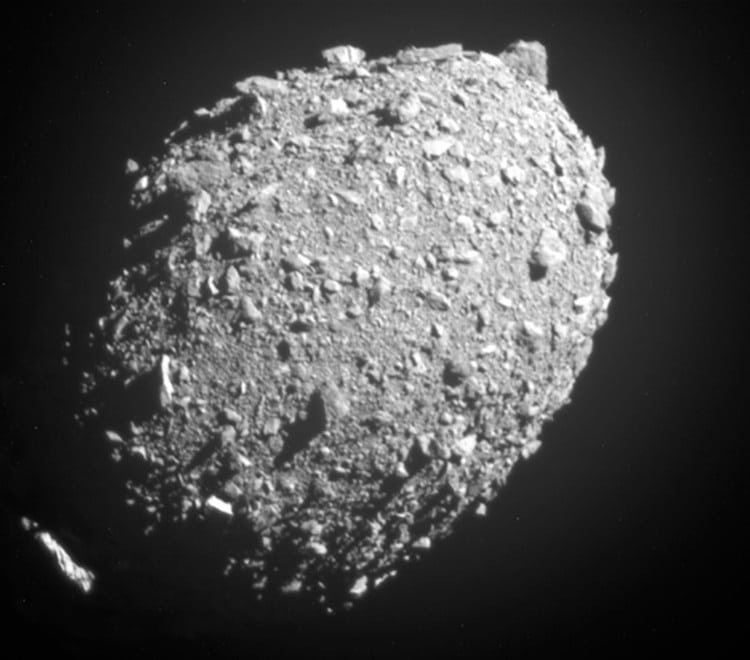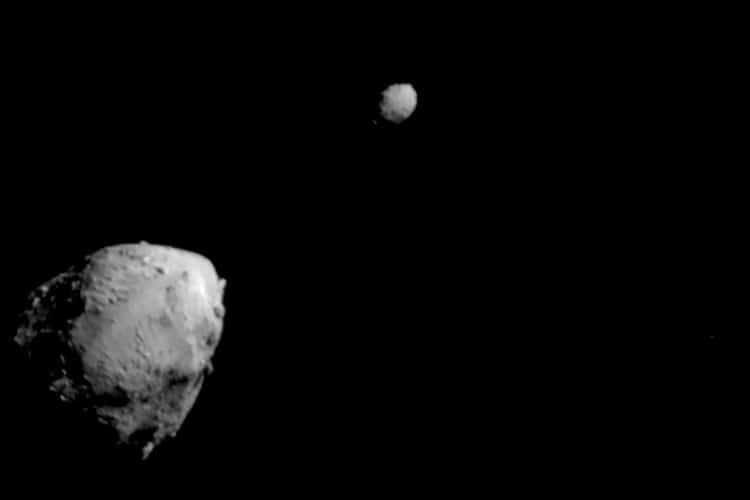
Photo: NASA / Johns Hopkins APL
In 2022, NASA’s Double Asteroid Redirection Test (DART) spacecraft made history by achieving something we had only seen in movies. It altered the course of an asteroid that could potentially pose a direct threat to Earth. And while it all seemed like a success after DART hit Dimorphos at 14,000 miles per hour on September 26, 2022, it looks like there may be a new, slightly unnerving development, which was discovered by a group of high school students and their teacher in California.
Dimorphos, which orbits another asteroid called Didymos, is about 525 feet in diameter. Upon the impact, DART shortened Dimorphos’ orbital period by 33 minutes—or so it was thought. Upon further observation, the students from Thacher School found out that the asteroid’s orbital period was actually 34 minutes shorter than it was before the impact and has continued to decrease by a few seconds, according to New Scientist.
“That was inconsistent at an uncomfortable level,” Jonathan Swift, a math and science teacher that was a key part in the research, said in an interview. “We tried our best to find the crack in what we had done, but we couldn’t find anything.” The team shared their findings at a meeting of the American Astronomical Society in June and posted a preprint of their paper last month.
On top of the newfound unpredictability of the hit asteroid, there have been other unexpected developments, as researchers for the European Space Agency (ESA) observed that it does not have one, but two tails of debris coming off of it. The impact also caused rock fragments to break off from the asteroid, creating a “swarm” of 37 boulders that range in size from 3 feet to 22 feet across around Dimorphos.
But despite this surprising behavior, there’s no reason for alarm. Dimorphos sits at 6.8 million miles away and poses no threat to Earth. On the other hand, the findings made there will teach astronomers about this brand new space defense technique for years to come, so this one mission is key to understanding the wild nature of asteroids. Should all go according to plan, astronomers will get more insight about how DART affected Dimorphos by the end of 2026, when ESA’s Hera spacecraft makes it to Dimorphos and gets a better picture of what happened after the crash.
Dimorphos, the asteroid hit by NASA’s Double Asteroid Redirection Test (DART), was found to be behaving erratically, as its orbital period became shorter than originally expected.

Photo: NASA / Johns Hopkins APL
NASA: Website | Instagram
h/t: [Smithsonian Magazine]
Related Articles:
NASA’s DART Mission Successfully Moved a Stadium-Sized Asteroid’s Orbit
NASA Discovers Asteroid That Could Hit Earth on Valentine’s Day 2046
NASA’s Artemis I Mission Ends Successfully With Splashdown of Orion Capsule
NASA Just Made History by Successfully Crashing a Spacecraft Into an Asteroid
